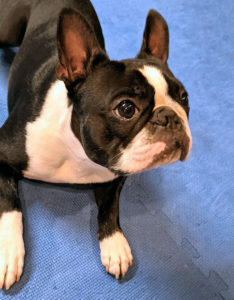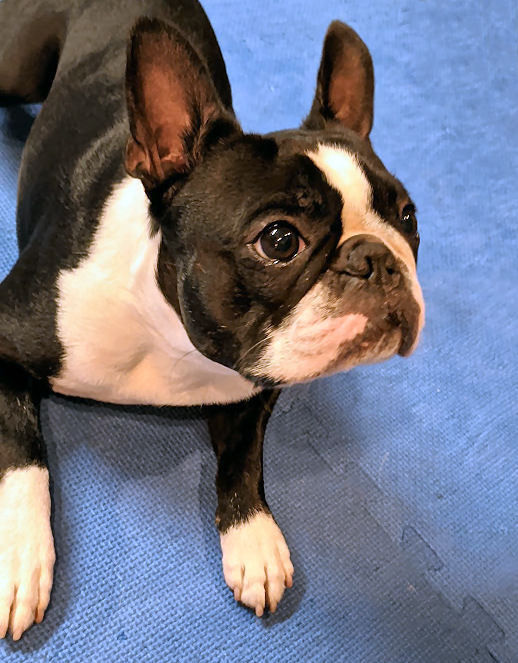Does your dog lose focus easily? Does any sound or movement get them off their game? If that describes your dog, it’s time to double down on dog training distractions.
One of the nosiest dogs on the planet lives right here with us. Simon has to know what everybody’s doing at all times. And if it’s something he’s interested in, his brain melts out of his ears and his focus is gone. How does Fran get it back? She has the yummiest treats, the best toy, the most enthusiastic attitude. The objective is to let Simon know that what he’s supposed to be doing is more fun and more interesting than anything else happening.
Calm isn’t the answer
Like parents of newborn babies, the natural instinct is to hush everything when you’re trying to get baby to sleep or dog to focus. But that’s not real life. Babies have to learn to sleep through normal household sounds. And dogs have to learn to pay attention through everyday distractions.
You may want to limit distractions when teaching your dog a new game or behavior. When dogs don’t know what to do, many will sidetrack or disengage rather than be “wrong.” Others will start showing off all the tricks and behaviors they know, trying to figure out what you want. The initial phase of any new training game is when you want to control the environment and keep dog training distractions to a minimum.
Increase dog training distractions during familiar games
But once your dog is familiar with a new game, it’s time to let chaos reign. Today Simon’s focus and concentration was severely challenged. Fran was planning to practice the Directed Retrieve with him. In non-obedience terms, that’s where you put three gloves out, spaced pretty evenly apart, and tell the dog which one to get. They’re supposed to bring it back to you, sit in front of you, drop the glove on command, and go back to heel position when directed. It’s a complex behavior with lots of parts to train.
Take it to extremes
Simon was doing okay with it until the other dogs started squeaking their toys in their crates. Everybody gets their turn, both playing training games with their person, and waiting in their crates. Today Torque and Booker got new toys, the squeakers were still intact. That won’t be true for long, but it was today. (Simon got a new squeaky toy, too.)
As soon as the squeaking started, Simon’s head swiveled to see where it was coming from. Another squeak and he dashed over to see what the other dogs had that he didn’t. Fran ditched her plan for the session and went into “dealing with distractions” mode. We’ve talked about this before, with the “Look- Loo” game, but this is taking the game up a notch, with the squeaking.
That’s not chasing him, yelling at him, or scolding him. It’s changing what you’re doing so you’re more interesting than the distraction. As soon as Simon glanced in her direction, Fran praised him and started running away. The fastest way to get a dog to come to you is to run away from them. When he followed, she gave him multiple high-value treats, praised him, and started a very-familiar routine. In Simon’s case, he loves heeling practice, so that’s what she did. She kept her eyes glued on his face. Every time he made eye contact, she praised and rewarded.
Watch where they’re looking

Dogs are pretty easy to read. If they’re not looking at you, chances are they’re not paying attention to you. If you tell them to do something at that point, it’s probably not going to happen. We’ve seen it lots of times, especially in an exercise like the “Recall,” or “Come!” If you’re across the room and your dog is looking right at you, you can say “Come!” and they probably will. If they’re watching something else, that’s where they’ll go when you call.
That’s when you use your dog’s name before the command. If your dog doesn’t look at you, don’t continue. Go back to your dog and start over. The last thing you want to do is set your dog up for failure. You do want to work through the distraction.
With the squeaky toys, we couldn’t predict when the other dogs would make noise. To target working on Simon’s focus with a squeaker distraction, Hope picked up a toy and made noise at regular intervals. Fran was able to focus on getting eye contact with Simon and continue her 2-Minute session.
Was Simon perfect after a couple minutes? No, of course not. But he made some progress and happily played with Fran. Tomorrow’s another day to try again.







